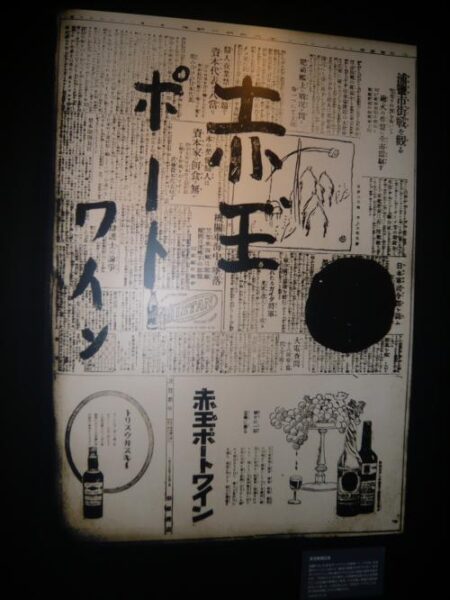1. Second son of Torii family
More than ten years after Japan broke its isolation and opened its ports to the outside world, the Sword Law was enforced and the samurai were renamed the Shihi or nobility, and although the former warriors had the title of “samurai”, their lives and treatment were no different from those of commoners.
Having no choice but to give up their swords and suddenly become merchants, the samurai gradually became dissatisfied and eventually started to rebel in various parts of the country.
Whisky was imported to Japan in 1872 (Meiji 4), and a short time later, on 30 January 1879 (Meiji 12), the first whisky was imported to Japan.
“Chubei Torii”, the third generation of a money changer and rice merchant who had been in business since the Edo period, has four children with “Koma”.
The youngest of four siblings, “Kizo” (elder brother), “En” (elder sister) and “Setsu” (younger sister), “Shinjiro Torii”, later to become Suntory’s first president, was born in Tsurikane-cho, Osaka Prefecture’s First Great Ward (later Chuo Ward), in a still far from peaceful environment.
1-1 The impact of the Civil War
Shops at the time had to cope with the ever-changing world situation by combining various side businesses in addition to their main business.
For example, Shinjiro Torii’s birth family switched from being a money changer to a rice merchant.
There was a reason why Chubei Torii stepped down from the money exchange business.
The government issued a large amount of banknotes that could only be used domestically to finance the army in the Civil War, and as a result, the value of banknotes fell.
To control inflation, the government decided to recall the notes it had issued, setting a standard of value for trade transactions between countries.
In addition to this, the government improved the minting technology of the coins that had been used until then, abolished the coins that had been circulated in different regions, and introduced the globally accepted gold and silver coins for national unification and fundamental reform.
Furthermore, in order to circulate convertible banknotes (notes that can be exchanged for gold and silver coins) throughout the country, the Bank of Japan was set up in every region of the country.
A branch of the Bank of Japan is also established in Osaka.
To encourage the collection of fiat currency, the Bank of Japan decided to offer free exchange commission.
Since commissions were the main source of income for money changers, their income dropped drastically.
At this time, Chubei gave up the money exchange business and turned his attention to the rice business.
Alongside the rice business, he was also selling cider, ramune and imitation whisky.
However, Chubei’s unfamiliarity with the new business did not go as well as he would have liked.
In addition, his eldest son, Kizo, is the successor to the family head, while his second son, Shinjiro, is unable to take over the reigns.
Chubei, who was distressed, decided to send Shinjiro to a primary school in order to enable him to stand on his own.
Around this time, the “Elementary School Ordinance” of 1886 (Meiji 19) was issued.
The term “compulsory education” appeared in the literature for the first time, stating that “parents are obliged to send their children to school.”
Tuition fees were self-paid, and the monthly fee of 15 sen at the time was converted to today’s amount of around 1,300 yen.
The school attendance rate was low, at less than 50%, mainly due to the fact that sending children to school meant that there was not enough manpower for household chores and business, and also because of the inability to pay tuition fees.
1-2 Emerging headspots
In 1887 (Meiji 20), at the age of eight, he entered Kita-Oe Elementary School in Shimamachi, Higashi-ku, Osaka; in 1888 (Meiji 21), at the age of nine, he “skipped over four years at the same primary schools and was transferred to a higher department”, according to an online statement, but in fact a sentence from the book “Yatte Minahare Mitokunnahare”, co-authored by the Naoki Award-winning author “Hitomi Yamaguchi” and Akutagawa Award-winning author “Ken Kaikou” (The book contains this sentence.).
Hitomi Yamaguchi(Image source Wikipedia)
In April 1891(Meiji 24), she entered Kita Oe Primary School.He attended that primary school for only one year and entered a higher primary school the following year.
He seems to have had good grades, but was also a skilled student. (Omitted)
He also spent only two years at the four-year senior primary school.
He went on to the Osaka Commercial School in Umeda, Kita-ku.
The school system at the time was still ambiguous, and there is no evidence as to whether this was due to Shinjiro’s outstanding grades.However, it can be inferred from Shinjiro’s later years that he would have been a brilliant and quick-witted boy.
Ken Kaikou (image source Wikipedia)
The Osaka Commercial School probably developed from a private school, considering its age.He attended this school for two years.
In 1892, at the age of 13, he entered the service of Gisuke Konishi, a drug wholesaler in Doshomachi.
There is a newspaper advertisement in the Konishi Gisuke Shouten newspaper saying ‘Seeking one apprentice’, so there was a vacancy, one of which must have been Shinjiro.

Reference: Ministry of Education, Culture, Sports, Science and Technology, School System Chart in 1881.
At the time, educational institutions were still in the process of development, and it is thought that the educational system, which was based on the Gakusei, an educational law issued in 1872(Meiji 5) that established Japan’s first modern school system, was amended twice, leaving educational policy to the regions and allowing students with outstanding results to skip to higher education at the discretion of the local authorities.
In 1890 (Meiji 23), at the age of 11, he entered an affiliated department of the Osaka Municipal Comme
rcial School in Edobori Minamidori (present-day Edobori), Nishi-ku, Osaka (later Osaka Municipal Tennoji Commercial High School, now Osaka Municipal Osaka Business Frontier High School).
In 1888 (Meiji 21), this Osaka Commercial School established “a preparatory course (2 years), a main course (2 years) and an attached course”, and this attached course became the predecessor of the later Class A Commercial Course.
As the term ‘Class A commercial department’ (the first of several) suggests, it was a kind of technical school as we know it today.
Students take 10 subjects: reading, calligraphy, arithmetic, bookkeeping, commercial writing, commercial geography, commodities, commercial economics and commercial practice.
The department focuses most on “Commercial Practice”, in which students are divided into groups and each group is organised as a private shop or company.
The individual shops and companies were organised and assigned banks, warehouses, transport, insurance, etc. as their institutional departments, and the groups of students were rotated throughout the year’s classes.
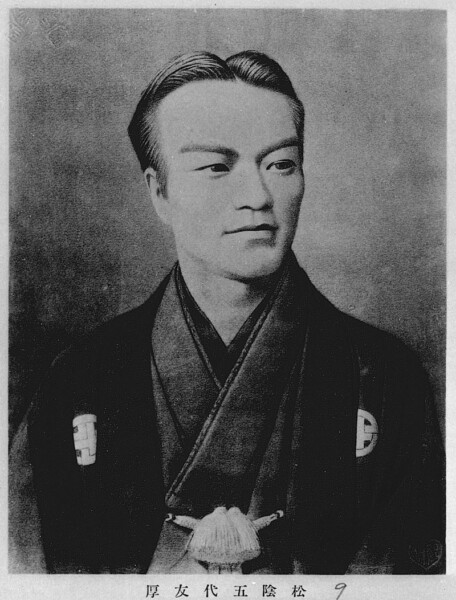
Tomoatsu Godai (Image source: Wikipedia)
The class was a fairly full-fledged so-called role-playing class, in which the group students were made to work independently of each other in accordance with the prescribed trading instructions, and at the end of the term, each section was made to settle its accounts and report back to the class.
Incidentally, the founder of the Osaka Commercial School, which Shinjiro attended, was “Tomoatsu Godai”, a leading figure in the Osaka business world.
Later, in 1892 (Meiji 25), at the age of 13, he went on an apprenticeship with Gisuke Konishi, a drug wholesaler in Doshomachi, Higashi-ku, Osaka (now Konishi, an adhesive manufacturer).
It was at this time that he acquired knowledge of Western-style alcohol, which was handled by Konishi Gisuke Shohten.
1-3 Konishi Gisuke Shohten

Image credit: Konishi Corporation
Gisuke Konishi the first-generation worked for a medicine merchant in Fushimi-cho, Osaka, before buying a medicine merchant in Doshomachi and setting up shop under the trade name “Konishiya” in 1870 (Meiji 3) and starting a medicine business.
Gisuke I, who was full of enterprising spirit, embarked on the production of Western-style alcohol, which was rare at the time.
However, the investment in equipment and other costs put the company into enormous debt.
The business crisis was saved by Denjiro Kitamura, a servant who later became Gisuke the second generation.
At this time, Denjiro had mastered the technique of engraving medicines, which was rare in Osaka at the time, and paid off his debts in three years.
His work was recognised and he married the eldest daughter of Gisuke the first-generation. He continued to demonstrate his business acumen and introduced “Asahi Jirushi Beer (*there are various theories)”, which was the basis of Asahi Beer, and “Akamon Jirushi Budoshu”, a grape wine.
Denjiro assumed the name Gisuke and went on to run Konishiya as Gisuke Konishi the second generation, both in name and reality.
From 1912 (the 1st year of Taisho era) the company concentrated on wholesale, selling industrial chemicals and imported alcohol, as well as manufacturing and selling Japanese Pharmacopoeia alcohol, before establishing a limited partnership in 1914 (Taisho 3).
In 1925 (Taisho 14), the company was reorganised as Konishi Gisuke Shoten Co Ltd, which is still thriving today as “Konishi”, a hit manufacturer of products such as “Bond” and “Aron Alpha”.
2. Kotobukiya Western Liquor Store
In 1894 (Meiji 27), Japan, feeling threatened by Russia’s growing dominance, attempted to acquire the still untouched Korean Peninsula.
However, the Sino-Japanese War broke out, triggered by clashes between the Qing and Japanese sides, who claimed that the Korean peninsula belonged to them.
This event would be Japan’s first war with a foreign power.
Meanwhile, after three years of apprenticeship at Gisuke Konishi, Shinjiro moved to Kannosuke Konishi, which dealt in paints and dyes, in Hakuromachi, Higashi-ku, Osaka, in 1895 (Meiji 28), at the age of 16.
There are various theories as to why he changed employers, and it is said that it was due to a quarrel with a senior colleague or a desire for independence.
It seems that he also learnt blending techniques at Konishi Kannosuke Shohten, and the fact that he was not satisfied with the red colour of the poster for the later “Akadama Port Wine” and had to redo it many times may be due to his experience of handling paints and dyes, or perhaps it was his experience here that made him so extraordinarily particular.
He worked for Konishi Kannosuke Shōten for two years, after which he returned to his birthplace following the death of his father Chūbei.
In 1898 (Meiji 31), “Shigenobu Okuma” formed the first political party cabinet in Japanese history.
In 1899 (Meiji 32), at the age of 20, Shinjiro established “Torii Shoten” in Utsubo Nakadori (now Utsubohonmachi), Nishi-ku, Osaka City, at a time when the wave of modernisation was just around the corner.
2-1 Torii Shoten
Many of the products he handled in his apprenticeship were state-of-the-art foreign goods brought in by ship, and he naturally developed a refined sense of taste, which led to Shinjiro’s aim to create a grape wine that suited the Japanese palate.
At the time, grape wine had a strong image as a tonic “medicine”, similar to today’s nourishing sake.
He was introduced to Spanish food and wine by a Spaniard from the Serrace Brothers Trading Company, an import merchant in Osaka, whom he met while he was a child, and started buying and selling Spanish wine from the “Serrace Trading Company”.
2-2 Government Recommended New Age Alcoholic Beverages
Shortly before this, the Meiji government relied on rice for its main political base, which was mainly “annual tribute” from the old imperial domain.
Therefore, as part of the policy to reduce the consumption of rice as a raw material for sake brewing in preparation for a bad harvest, and as part of the policy to promote industrial development, Toshimichi Okubo, Kiyotaka Kuroda, and others started to promote grape cultivation and wine brewing.
In 1870 (Meiji 3), Hironori Yamada and Norihisa Takuma established a wine brewery in Kofu City, Yamanashi Prefecture, called “Budoshu Kyodo Brewery”.
These two men are known as the first winemakers in Japan.
Unfortunately, the business closed down within a few years due to financial difficulties, but with the encouragement of the government, more and more people started to get into the wine business.
In 1877 (Meiji 10), “Dainippon Yamanashi Budoshu Company,” the predecessor of Mercian, which cannot be missed if you like Japanese whisky, appeared as the first wine brewery in Japan under a private company.
However, “Dainippon Yamanashi Budoshu Company” was forced to close its business within a few years after its mid-career.
The company’s wine was not suited to the Japanese palate, the brewing technology was not yet mature, the wine spoiled due to the lack of preservatives, and the government attempted to plant Western grapes, but they were not suited to the Japanese climate and most of them died due to insect infestation, among other problems.
After the dissolution of “Dainippon Yamanashi Budoshu Company”, Kotaro Miyazaki and Ryuken Tsuchiya later established “Daikokutenjirushi Kai Budoshu”.
The company was later renamed Ocean Corporation.
Tatsunori Tsuchiya later became independent and established “Maruki Budoshu Co”.
In 1927 (showa 2), “Zenbee Kawakami“, later known as the “Father of Wine in Japan,” succeeded in producing 22 varieties of grapes, including “Muscat Baily A”, the most representative domestic wine.
2-3 Mukai Shishi Wine
At first, Shinjiro sold authentic Spanish wine as it was, but the sales were not good, and he soon began to produce a synthetic wine with a different flavor.
In 1900 (Meiji 33), just over a year after opening, he moved the store to 2-chome, Kitahorie-dori, Nishi-ku, Osaka City, and then to Wajima-bashi zume, Nishi-nagahori-kita-dori 2-chome, Nishi-ku.
From this time on, Shinjiro began to demonstrate not only his skills as a blender, but also his outstanding management skills.
While making wine, Shinjiro also began to market to the foreign settlement in Kawaguchi, and he was also an early adopter of newspaper advertisements at a time when they had not yet become widespread.
In 1902 (Meiji 35), to expand business, the store was relocated to 2-chome, Andoji-bashi-dori, Minami-ku, Osaka, and by this time had grown so steadily that it was hiring servants.
In the same year, the Anglo-Japanese Alliance was formed against the backdrop of strained relations with Russia, and imports of British whiskey gradually increased.
The following year, in 1903 (Meiji 36), streetcars began operating under Osaka’s municipal management.
In 1904 (Meiji 37), the Russo-Japanese War broke out following the Giwadan Incident in Qing China.
*The Giwadan was a secret society or religious organization that grew as a result of the invasions of powerful nations, which led to the destruction of the lives of its citizens, and the rise of the anti-Christian movement. Russia suppressed the Yihe Dan.
Russia dispatched troops to Manchuria to suppress the Yihe Dan and occupied all of Manchuria.
Fearing that Russia might take over the Korean Peninsula as well, Japan concluded the Anglo-Japanese Alliance with Great Britain to oppose Russia over its interests in Korea and Manchuria.
This led to the outbreak of the Russo-Japanese War.
In 1906 (Meiji 39), Torii Shoten was renamed “Kotobukiya Western Liquor Store” with Nishikawa Definitions as a partner.
At this time, the predecessor of “Akadama Port Wine“, “Mukai Shishi Mark Sweet Grape Wine,” was completed.
Although the product was launched with great anticipation, there were already other grape wines in the market that boasted an overwhelming share of the domestic market.
2-4 Fragrant Wine
Bee-infused falsified grape wine made by Denbei Kamiya is a product of the “Kamiya Bar,” a well-known, long-established bar still in Asakusa today.
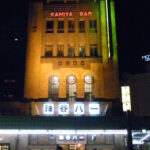
Current Kamiya Bar (Image source: Wikipedia)
In 1880, the first store was named “Mikaya Meishu-ten“, which was the first business in Tokyo to sell alcohol by the glass, similar to a shot bar.
A year later, in 1881 (Meiji 14), the company launched Bee Seal Kabari Budoshu.
The origin of the name “Bee Seal” is derived from the logo mark of “Beehive Brandy” from Bordeaux, France, which was imported by the Freret Trading Company in Yokohama during his three-year apprenticeship. It was called “Beehive Brandy” because of its logo.
At that time, not many people could read English labels, so they often referred to the logo mark as the 〇〇mark.

Fragrant Wine at the time (Image source: Oenon Group)
It seems that Denbei Kamiya decided to use the bee mark design for his new products after he became independent, as a memory that would remain from his days as a chokojo (apprentice).The name “Kouzan” was used by Denbei’s father, Kamiya Hyosuke, when writing haiku, to remember the debt he owed his parents, and also because of the meaning of “a rich aroma that cannot be fully concealed even if it is concealed” in the word.
Later, he further produced a fast brandy, which became a big hit, to his surprise, as it was widely known to be effective against “cholera”, an epidemic disease of the time.
This fast-cured brandy would later become the famous “Denki Bran”.
Even today, you can enjoy two different flavors of Denki Bran, “Denki Bran” and “Denki Bran Old” at Kamiya Bar as “Hachibudo Shu Red and White” for Bee Inka Fakari Budoshu. It is “Kamiya style” to drink draft beer instead of chaser.
How did Shinjiro stand up to Denbei Kamiya of “Mikaya Meishuuten (now Kamiya Bar),” which is still one of the symbols of Asakusa?
3. Wine of the Sun
In addition to his daily business of serving customers and wholesaling, Shinjiro continued to improve the taste of his products, “Mukai Shishi Budoshu” and “Mukai Shishi Mark Sweet Budoshu,” and finally came close to his ideal taste of the Portuguese wine he had drunk at the Serrace Trading Company.
It had been about nine years since he started making wine.
Two years after the end of the Russo-Japanese War, the Tokyo stock market crashed due to the lack of war reparations, and Japan was in the midst of a postwar depression.
On April 1, 1907 (Meiji 40), “Akadama Port Wine” was finally born.
The wine, with its motif of the sun, was a reminder of the dawn of Japan’s changing times to come.
3-1 Akadama Port Wine
Shinjiro, who had grown powerful enough to have dozens of servants, used his manpower to have them all wear lintels with the words “Kotobukiya” and “Akadama” printed on them in large letters, so that he could advertise wherever he went. Shinjiro himself was already famous as a high-currency person in the neighborhood, dressed in a suit that was not yet popular among the public and riding a “Pierce” bicycle, a luxury item that cost 280 yen (more than 4 million yen in today’s value) and were few in number at the time.
The high-curious Shinjiro was also actively involved in the advertising business.
On August 19, 1907, he placed his first newspaper advertisement, simply stating, “We are a Western liquor wholesaler and our kindness is our specialty, and we ship quickly.”
While a square of rice cost 10 sen, a bottle of Akadama cost 38 sen, or 4.20 yen for a dozen bottles, which was a higher price than that of Bee-Inko-Tamari grape wine.
3-2 Novel and high-currency business
Because of their high price, retailers who were willing to sell out and still have more products available were given a maroon box brazier in winter and a tobacco tray in summer as prizes if they sold two dozen of them.
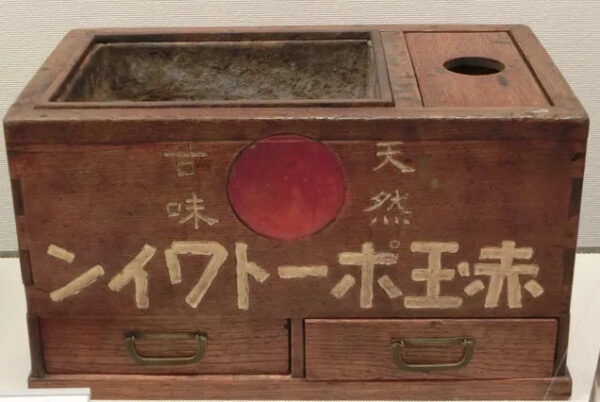
A brazier of red ball port wine, estimated to be from around 1921, on display at the Edo Tokyo Museum (Image source: My Song My Foolish Heart)
The novelty business as we know it today has existed since the Edo period (1603-1867), when ukiyoe artists were asked to draw the date the store opened and a picture of a popular Kabuki actor, sumo wrestler, or other figure, which was described as a “Hikifuda,” or “drawing card,” and handed out to shoppers.
It would not be surprising for Shinjiro, a Kabuki watcher and lover of high culture, to use this novelty business method.
On December 4, 1908 (Meiji 41), at the age of 29, Shinjiro married Kuni Ozaki, the eldest daughter of Kazumasa Ozaki, who was eight years younger than him.
On December 23 of the same year, his first son “Kichitaro Torii” was born.
Around this time, “Matsubara Shoten,” a Western liquor wholesaler with nationwide sales channels, began to handle Akadama port wine, and the business was stabilized.
The company continued to focus on advertisements, and the advertising slogan “Home-brewed products are available at a special discount,” and “A list of fixed prices will be mailed to you upon application,” were all designed with Akadama port wine in mind.
In 1911 (Meiji 44), the right of tariff autonomy was restored with the revision of the Unequal Treatment Treaty.
With the restoration of tariff autonomy, imports from abroad soared in price. Demand for domestically produced goods, which are not subject to tariffs, rises.
An advertisement on May 14 of the same year pushed the appeal of the product as a medicinal wine to the forefront: “The best natural sweet medicinal grape wine for nourishment! Akadama Port Wine”.
It also featured the following words: “A shortcut to a stronger body and more active society! Try it now. Try it now, and you will surely increase your blood, flesh, strength, and health.
If you drink it morning and evening, it will prevent illness, keep you healthy, and give you vigorous vigor and therefore a long life,” the doctor’s certificate said.
At night, 30 red and black paper lanterns with “Akadama Port Wine” written on them were hung in the storefront of Kotobukiya, and people wearing happi coats with Kotobukiya written on them paraded around the town, like a sandwich man walking around with a signboard hanging from his neck. This spirit has been carried on to the present day, when Shinjiro is even known as “the Suntory of advertising and publicity.”
Shinjiro recalls this time as follows.
“I have been making Western-style alcohol since I was young. No matter how good the product is, it will not sell if you just make it.
So I started advertising in newspapers, which was very effective.
I advertised because consumption was declining, and I advertised because my products were ready.
How could they advertise so much?
We cannot overlook the important role that advertising has played in the development of Western-style alcohol to the extent that it has come to be drunk to this day.”(From the Mainichi Shimbun’s 30,000th issue)
The novelty strategy was further refined in the following years, using the open box notification system (see below) to win over retail store employees.
3-3 For The Public Good
Shinjiro, who was a deeply religious man, was almost charitable, and in times of emergency, especially when there was a fire nearby, he actively took his young employees with fire taps and steeples to protect evacuees and help them carry household goods.
Their happi coats with the words “akadama” (red ball) on them must have left a strong impression in people’s memories at that time.
He gave large sums of money to those whose homes had burned to the ground, and he personally visited nearby liquor stores to offer words of encouragement.
From his early childhood, he was raised by pious parents and inherited the spirit of “Intoku,” which means that one should not ask for anything in return from those who have given alms.
On February 1, 1911 (Meiji 44), “Hermes Whisky,” an imitation whiskey, was launched.
On July 1 of the same year, “Mamebin Rikyu-shu” was invented. (The liqueur had already been introduced during the reign of Hideyoshi Toyotomi and was called “Rikyu-shu”.
Shinjiro, who was a great admirer of Hideyoshi Toyotomi, even published a book titled “The Living Hotaiko” in 1939 (Showa 14) under the pen name “Torii Jusanjin“.
Although Sen no Rikyu was a rival of Toyotomi Hideyoshi, the name of the book is typical of Shinjiro’s naming sense.
In 1912 (Meiji 45), the fifth Olympic Games were held in Stockholm, and the first Tsutenkaku Tower was completed. (Unfortunately, it was destroyed by fire in 1943 (Showa 18), and the current Tsutenkaku Tower is the second generation.)
At this time, the joint management with Nishikawa Definitions was terminated and the building was relocated to Sumiyoshi-cho, Higashi-ku.
The era continued into the Taisho era.
As a side note, the store where Shinjiro bought the “Pierce” bicycle is called “Godai Bicycle Company,” and the apprentice who worked there was “Konosuke Matsushita“, who later became known as the “God of Management”.
It is not known if they met at this time, but they later hit it off at a social gathering called the Mon-Nashi-Kai.
It is possible that Konosuke may have told Shinjiro at this meeting or at the time of their acquaintance that he had worked for Godai Bicycle Company during his apprenticeship.
4. Advertising
In 1914 (Taisho 3), the assassination of the Crown Prince of Austria by Serbian nationalists, known as the Sarajevo Incident, triggered the outbreak of World War I.
As a result, about 50 countries were involved, and Japan, which had been allied with Great Britain, joined the Allied side.
In the same year, Kotobuki-ya changed its name to “Limited Partnership Kotobuki-ya Yo-shuuten” (capitalized at 9,000 yen at this point) as a corporate organization.
As the number of distributors gradually began to increase in the Kanto region, Shinjiro began to advertise and to spread the brand by word of mouth.
4-1 Geisha Review
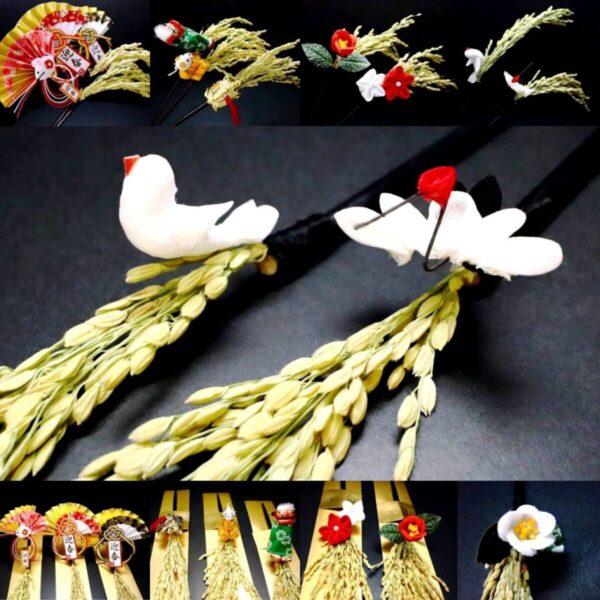
Inaho Kanzashi (ear hairpin) from the long-established Ginza “Kaname”
Shinjiro, who sometimes played geisha with his business partners as part of their business, noticed that during the New Year’s festivities, geisha would go up to the tatami room with an ear of rice kanzashi (hairpin).
The kanzashi had real ears of rice with doves, cranes, plum blossoms and other netsuke attached to them, and the birds(Tori) and rice(Kome) were used to playfully “capture(Torikome)” the guests.
The eyes of the bird on the netsuke were not painted on like dharma dolls.
There are various anecdotes, such as “If you ask someone you love to write their eyes on your netsuke, you will be united” or “If you get three grains of rice from an ear of rice hairpin and put it in your wallet, you will have good luck with money.”
So Shinjiro gives the geisha people a kanzashi with the eyes of a pigeon painted red in advance.
Yes, red balls.
It seems that he was trying to promote sales of akadama by puzzling over why the pigeon’s eyes were red.
Other geisha used to call menstruation “hinomaru” in a cloaked language, but on this occasion they gave it to her with a congratulatory gift, asking her to replace it with akadama.
4-2 Aggressive business expansion
1914 (Taisho 3): Akadama Muscato wine was launched. (*Stated in Suntory’s company history, Muscato is a German variety used for white wine.)
In March 1916 (Taisho 5), Masataka Taketsuru joined Settsu Shuzo Brewery.
In the summer of the same year, a number of incidents occurred in which insufficiently sterilized grape wine fermented in the bottle and exploded.
Fortunately, Kotobukiya escaped the incident because it had outsourced part of its Akatama port wine production to the Settsu Shuzo brewery.
At this time, Masataka Taketsuru became well known in the community as a skilled engineer at Settsu Shuzo.
In 1919 (Taisho 8), he found alcohol for liqueur in the depths of a warehouse that had been bought and left there, and discovered by chance that it had been aged.
This was the first “Tris whisky,” and only 3,000 bottles were sold.
The following year, Japan’s first bottled highball, “Wistan,” made with carbonated imitation “Hermes Whisky,” went on sale.
However, the sales of Uistan were not good, perhaps because the times were too fast.
Chikko Factory, a plant dedicated to bottling Akatama Port Wine, is opened in Shichijo-dori, Nishi-ku, Osaka (present-day Kaigan-dori, Minato-ku).
The plant imported wines used to make port wine from Spain and Chile, with a monthly production capacity of 5,000 dozen of Akatama Port Wine.
Furthermore, a bonded factory dedicated to export is established in Tomishima-cho, Nishi-ku, Osaka City.
The Chikko factory in this Minato Ward still exists 100 years later as the “Suntory Spirits Factory,” and as the only continuously distilled alcohol manufacturing base with a continuous distillation unit within the company, it produces a variety of base alcohols, including Suntory’s shochu and RTD beverages (all beverages that can be drunk right out of the lid).
At that time, personnel hiring was done by Shinjiro himself, who was deeply religious, liked new things, and was very particular about his work.
He was religious, liked new things, and was very particular. For a while, he was devoted to fortune telling, and sometimes relied on the results of fortune tellers to decide whether to hire or not to hire.
Then, on September 1, 1919 (Taisho 8), he decided not to rely on fortune-telling and scouted out a certain person.This person was “Toshiro Kataoka,” who is indispensable in the story of Suntory’s advertisements.
On November 1 of the same year, his second son “Keizo,” who would later become the second president of Kotobukiya, was born.
4-3 Advertising Genius Toshiro Kataoka

A dynamic advertisement in which a sumo wrestler who has never put his hand in the ring has put his hand in the ring. (Image source: Morinaga Seika)
Aspiring to become a writer, Toshiro Kataoka studied under Kyoka Izumi, who was known for “Koya Hijiri” and “Yashagaike,” but ended up breaking his brush.
In 1906 (Meiji 39), he worked at the legation of the Kingdom of Siam (Thailand) from 1909 to 1912.
After returning to Japan, he joined Nippon Telegraph and Telegraph (now Dentsu), but the following year
he was invited to work for Morinaga Seika as advertising manager, where he launched a series of hit advertisements.
His representative work at this time was an advertisement in which he wrote “Tenka Muteki Morinaga Milk Caramel” on the hand shape of then yokozuna Tachiyama, which was greatly acclaimed.
Toshiro Kataoka’s reputation was heard by Shinjiro, who continued to be obsessed with advertising.
In 1919 (Taisho 8), Toshiro Kataoka, who was famous for his strong spirit, joined the company on the condition that he would not interfere with any of Kataoka’s ideas, as his talent was bought by Shinjiro.Kataoka’s starting salary was a whopping 300 yen (about 2 million yen), and at a time when the average starting salary for a university graduate was 30 yen, the fact that he was offered such a large salary must indicate that Shinjiro recognized Kataoka Toshiro’s ability.
He immediately demonstrated his talent by using a full page of the newspaper’s advertising section, a very innovative method that is now considered a precursor to the so-called flame sale method.
The advertisement was a bold advertisement in which the name “Akatama Port Wine” was written in poor handwriting, as if written by a child, in the news section of a newspaper article, and the newspaper was inundated with inquiries about the advertisement, saying that “it contained a child’s scrawl.”
1920 (Taisho 9)
The first Prime Minister “Hirobumi Ito” assassinated in Harbin, China.
Around this time, a fire in the neighborhood spreads and destroys the North Plant located at the Horikawa edge of the city.
On March 1 of the same year, Fuji Brewery took over the Amagasaki factory and established “Torisu Co.”
Later, he introduced a new fermentation method called the amylo method and introduced the Guillaume distiller, which was suitable for mass production.
1921 (Taisho 10)
“Kotobukiya Co.,” Ltd. established in Sumiyoshi-cho, Higashi-ku, Osaka (now Matsuya-cho Sumiyoshi).
Shinjiro Torii was appointed as president and his brother Kizo as director.
At this time, “Akadama Port Wine” finally overtakes its rivals and grows to account for 60% of the domestic wine market.
Tokyo branch opens in Yurakucho 1-chome, Kojimachi-ku, Tokyo.
The bonded factory in Tomishima-cho, Nishi-ku, Osaka is relocated and integrated into the Chikko factory.
1922 (Taisho 11)
Toshiro Kataoka and designer Bokuda Inoue, who later designed the Suntory Kakubin bottle, were at the Kawaguchi Photo Studio to create further masterpieces, and a half-naked woman, Eimiko Matsushima, was standing at the end of their passionate gaze.
4-4 The first nude poster in Japan
To prevent information leakage, the windows were closed and the top-secret filming lasted six days.
The number of photos taken per pose was 50 or 60, which is normal nowadays, but at that time it was an unimaginably large number.
At the beginning of the shoot, the models were asked to gradually remove their kimonos and underwear, and the shoot was conducted with great care so as not to disrupt the mood of the shoot.
In later years, Eimiko Matsushima said in an article in Josei Jijin (Women’s Own), “I had worn open-breasted costumes on stage as well, so I did not think it was embarrassing. I didn’t think it was embarrassing,” she said.
After finishing the photo shoot, she rushed to the printer, but the poster was not published immediately.
Shinjiro had no say in Kataoka’s work, but he was particular about the colors.
The elegant sepia color that enveloped the entire image and the red color of the akatama port wine that shone brightly in the center of the sepia color were not finished in a red that Shinjiro was satisfied with.
According to the description on page 100 of “Yatte Minahare Mitokunnahare” by Hitomi Yamaguchi and Ken Kaiko, “From early spring, the poster was completed in early summer,” and it seems to have taken 3 to 4 months.
According to the “Printing Library,” the first edition of the sepia red poster was immediately stolen, and the green sepia poster was so popular that it had to be reprinted.
The sensational design also crossed the ocean to Germany, where it finally won first prize at a poster fair.
At the time, many people were reluctant to expose even a small amount of a woman’s skin, and some parents and relatives disowned her, saying it was “not the right thing for a young girl to do,” while others were interrogated by the police for disturbing public morals.
Later, Shinjiro founded an opera troupe called “Akadama Gakugekiza,” and for a short period of one year due to budget constraints, Emiko Matsushima became a prima donna of the troupe while traveling throughout Japan as a caravan group to promote Akadama port wine.
Shinjiro, who was also a flamboyant person, went around the country installing enameled signboards using a sidecar, a state-of-the-art motorcycle, and distributed Akatama Port Wine leaflets along the way, some of which had vouchers attached like winning lottery tickets, which was quite a heartwarming experience.
As a side note, the red sidecar used by Shinjiro in his advertising campaign also appeared in the TV drama based on the novel “Dream of Amber” by Shizuka Ijuin.

Akadama Gakugekiza (image credit: Suntory)
This sidecar was made to look as close to the original as possible, and the owner of the sidecar used in the filming, Mr. Fujioka of Kodo Kan, a vintage Harley shop, wrote in his blog that there was an automatic bicycle shop near Shinjiro’s store that sold the “Indian” sidecar, so it is highly possible that he used an Indian-made sidecar. It is highly possible that he was using a sidecar made by Indian Company.
When Western culture was gradually becoming familiar to the masses, numerous theaters sprang up from the entertainment district located on the west side of Sensoji Temple against the backdrop of the booming economy of World War I. The “Asakusa Opera” contributed greatly to the popularization of Western music, and its enthusiastic fans became a huge movement to the extent that they were called “peragolo.”
However, the Great Kanto Earthquake of September 1, 1923 (Taisho 12) made costumes, props, and theaters unusable, and the “Asakusa Opera” gradually declined.
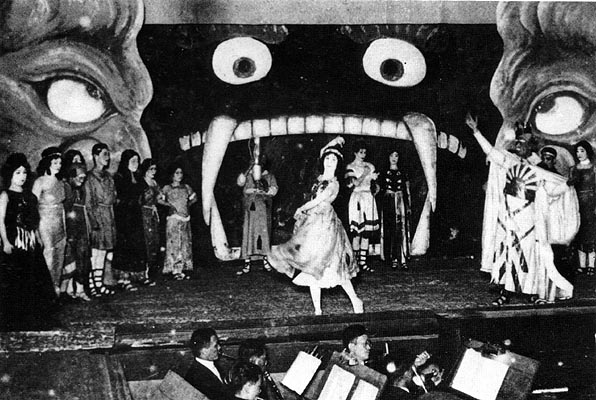
Asakusa Opera “Heaven and Hell” being performed circa 1917 (Image source: Wikipedia)
At the same time, Eimiko Matsushima, who had become a household name, married a man named “Tsunenori Tobishima” at the age of 21, although she did not disclose that she was married.
However, because of her popularity, a newspaper reporter finally reported that “Eimiko Matsushima had a husband,” and her popularity gradually declined.
In the year of her marriage, she stepped down from performing for about nine years after her first stage performance at Tokiwa-za and “Negishi Grand Theater Company,” which was derived from the Asakusa Opera.
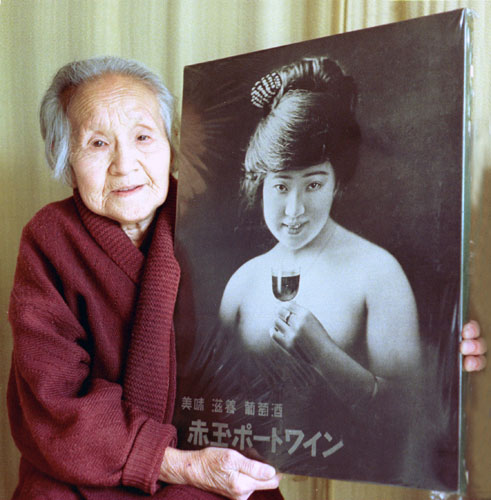
The last years of Emiko Matsushima’s life (Image source: My favorite Watashi no okiniiri♪)
After that, her whereabouts were unknown, but someone saw a poster of Eimiko Matsushima on display at the Suntory Museum of Art and “claimed to be the son of this poster,” and the relationship between Suntory and Eimiko Matsushima’s family continues to this day.
A rare photo of Eimiko Matsushima herself holding her own poster was posted on the blog “My favorite, Watashi no okiniiri♪” by the wife of Eimiko’s nephew, Toru Kawashima, in her later years.
The photo, taken by Toru Kawashima, was taken just before Eimiko’s death.
She came out of the washroom saying, “I don’t feel well,” and leaned on her son’s knee, ending her 90-year life on April 7, 1983.
Continue to No.2

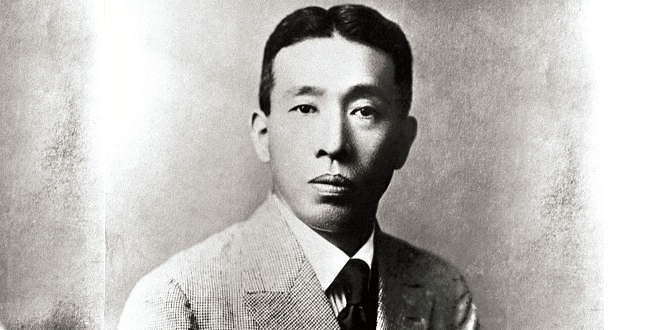

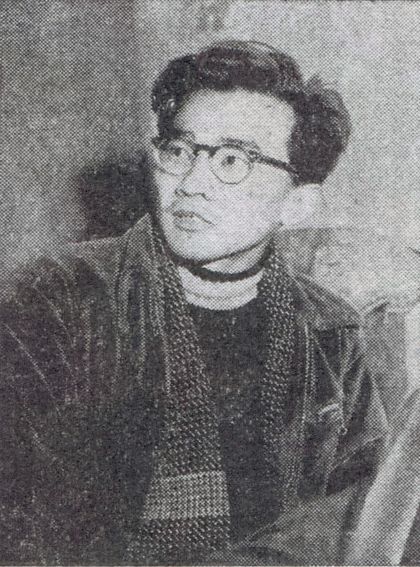
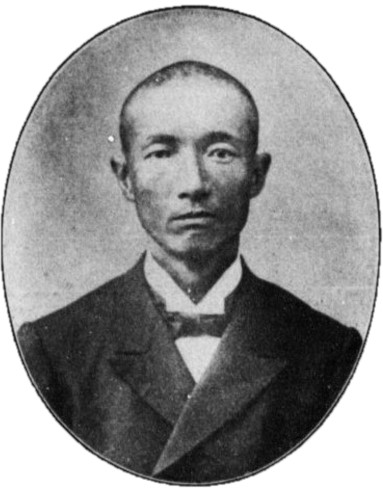

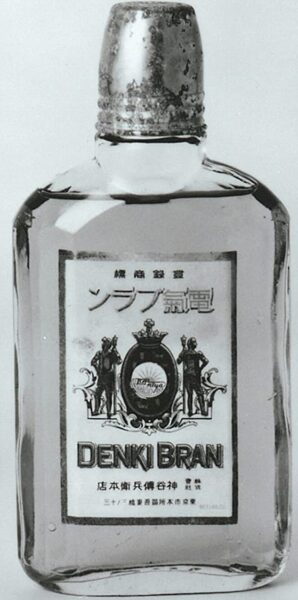


.png)
